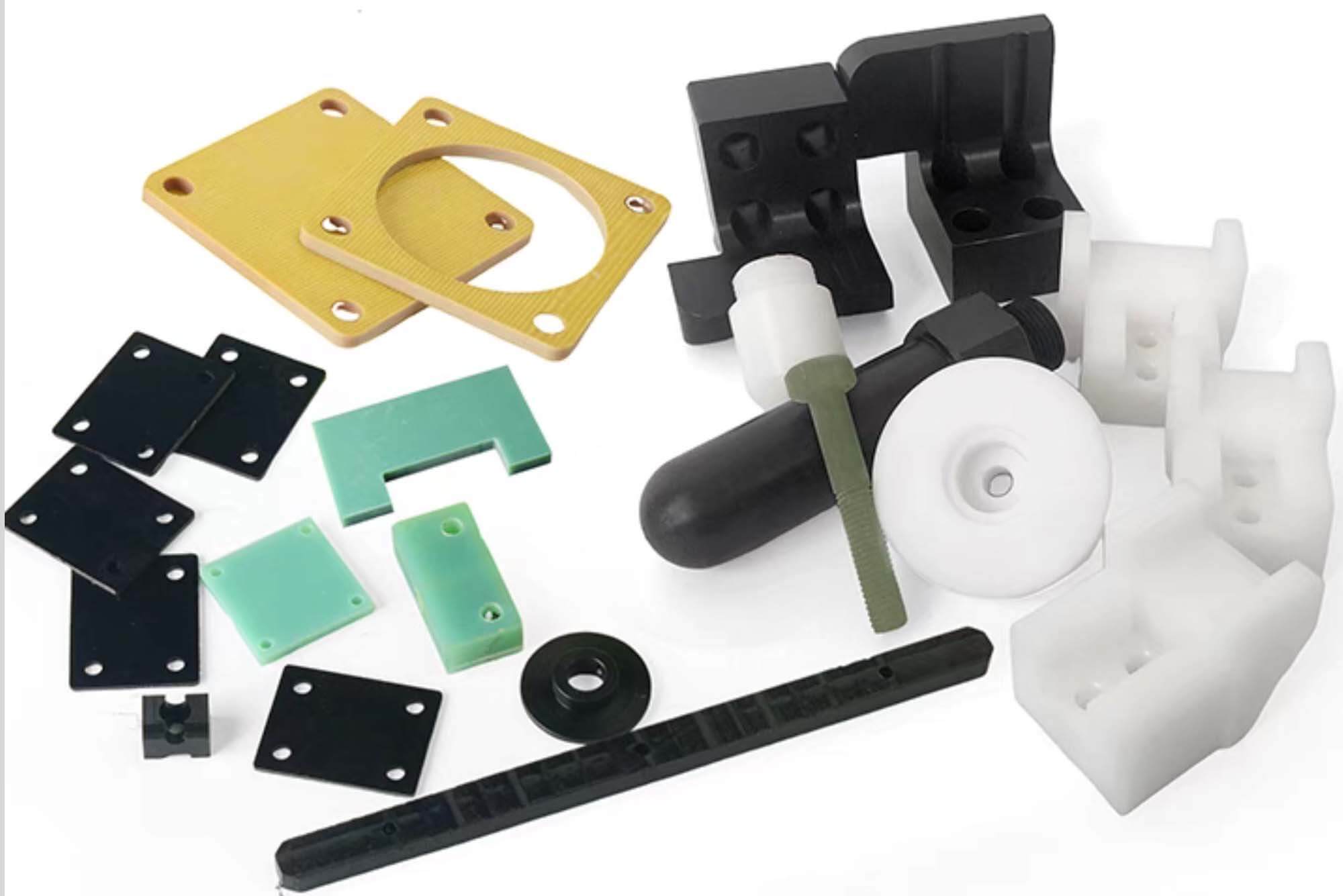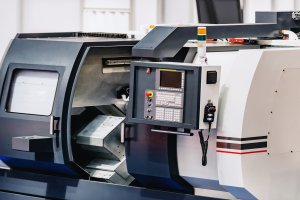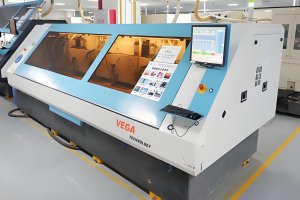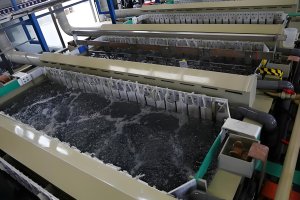Working with POM plastic in CNC machining has become a popular choice for manufacturers due to its excellent mechanical properties, low friction, and high dimensional stability. Customizing parts using this engineering plastic offers advantages in industries ranging from automotive to medical devices. With CNC machining, we can craft POM plastic parts that are both precise and durable, meeting the needs of clients who demand the best from their manufacturing processes. This article dives into how CNC machining ensures precision with POM plastic, while optimizing for performance and cost.
Understanding POM Plastic: Key Characteristics and Benefits
POM plastic (also known as acetal or Delrin) is a versatile engineering thermoplastic that has become the go-to material for applications requiring high stiffness, low friction, and excellent dimensional stability. Let’s break down its properties and how these contribute to precision in CNC machining.
Key Properties of POM Plastic:
- High strength and stiffness: POM is known for its ability to withstand mechanical stress while maintaining its structural integrity.
- Low friction coefficient: This makes it ideal for applications where smooth operation is critical, such as gears and sliding mechanisms.
- Excellent wear resistance: Parts made from POM are durable and last longer under repeated motion and pressure.
- Dimensional stability: POM holds its shape even under thermal stress, which is crucial for precision parts that need to fit exactly in assemblies.
- Chemical resistance: It withstands exposure to solvents, oils, and fuels, making it versatile in various industrial applications.
Applications where POM excels:
| Industry | POM Plastic Part Examples |
|---|---|
| Automotive | Gears, bushings, fuel system components |
| Medical Devices | Surgical instruments, prosthetics |
| Consumer Products | Appliance parts, fasteners, casings |
| Industrial | Bearings, rollers, conveyor belt components |
| Aerospace | Small structural components, brackets |
From these characteristics, it’s clear why POM plastic is a favored material in CNC machining.
CNC Machining and POM Plastic: Why This Combination Works
The combination of CNC machining and POM plastic brings out the best in precision manufacturing. CNC machining offers the ability to create complex, intricate designs with tight tolerances, and POM plastic’s properties enhance the process by being highly machine-friendly.
Why CNC Machining Works So Well with POM:
- Precision machining: POM’s high rigidity ensures that parts can be machined with tight tolerances, often within microns, essential for applications where accuracy is crucial.
- Surface finish: CNC machining produces a smooth finish on POM parts without much post-processing. The material naturally yields a fine surface, making it ideal for components where appearance and functionality are equally important.
- Complex geometry: POM plastic can be machined into complex shapes that would be difficult with other materials, allowing for innovation in design.
- Consistent performance: CNC machining allows for repeatability, ensuring that large production runs of POM parts maintain the same high standards.
Data Table: POM vs Other Plastics in CNC Machining
| Property | POM Plastic | Nylon | ABS | Polycarbonate |
|---|---|---|---|---|
| Machinability | Excellent | Good | Fair | Good |
| Dimensional Stability | High | Moderate | Low | Moderate |
| Surface Finish Quality | Excellent | Good | Moderate | Good |
| Chemical Resistance | High | Moderate | Low | High |
| Wear Resistance | High | Moderate | Low | Moderate |
These comparisons highlight why POM is such a reliable material for CNC machining compared to other common engineering plastics.
POM Plastic in CNC Machining: Key Applications
The versatility of POM plastic means it can be found in almost every industry that relies on precision components. Below are some of the most prominent applications:
Automotive Industry
POM plastic parts are commonly used in automotive components due to their low friction and high wear resistance. Gears, fuel system components, and bushings are typical parts machined from POM.
Medical Devices
In the medical field, POM is favored for its biocompatibility and durability. CNC-machined surgical instruments and prosthetics are often made from POM, as they need to withstand regular use without degrading.
Industrial Equipment
In industrial settings, POM is used to make components like bearings, rollers, and conveyor belt parts. Its resistance to wear and ability to maintain dimensional stability under stress make it ideal for heavy-duty applications.
Consumer Products
POM plastic parts in appliances, fasteners, and even electronic housings demonstrate how this material is perfect for everyday use products. Its clean finish and durability are critical here.
Data Table: Common CNC Machined POM Plastic Parts
| Industry | Part Type | Key Benefits |
|---|---|---|
| Automotive | Gears, bushings | Low friction, high durability |
| Medical Devices | Surgical tools, prosthetics | Biocompatibility, precision machining |
| Consumer Products | Appliance parts, casings | Smooth finish, chemical resistance |
| Industrial | Bearings, rollers | Wear resistance, dimensional stability |
| Aerospace | Small brackets, fittings | Lightweight, structural integrity |
Precision in POM Plastic Parts: How CNC Machining Achieves It
One of the core strengths of CNC machining is its ability to deliver high precision, and when working with POM plastic, this precision is magnified due to the material’s properties. Here’s how CNC machining ensures accuracy in custom POM parts:
Tight Tolerances
POM allows for CNC machining to maintain tolerances as tight as ±0.01 mm, which is critical for components that must fit perfectly in assemblies, such as gears or moving mechanical parts.
Surface Quality
A smooth surface finish is a hallmark of CNC-machined POM plastic. Due to the material’s natural characteristics, CNC machining leaves minimal tool marks, meaning less need for post-processing.
Consistency and Repeatability
For industries that require large quantities of precision parts, CNC machining ensures each POM plastic part is identical to the next. This repeatability is essential for mass production in sectors like automotive and electronics.
Durability
CNC-machined POM parts are not only precise but also incredibly durable. The material’s wear resistance and chemical stability mean these parts can withstand harsh conditions without losing their shape or functionality.
CNC Machining Techniques for POM Plastic
Different CNC machining techniques are used to maximize the potential of POM plastic. Here are the most effective ones for this material:
CNC Milling
CNC milling is ideal for POM plastic when intricate shapes and fine details are required. The process involves removing material from the workpiece to create the desired shape, and POM’s machinability makes it perfect for this.
CNC Turning
When creating cylindrical components like bushings or rollers, CNC turning is the go-to method. POM’s high dimensional stability ensures that the machined part maintains accuracy even with complex geometries.
Drilling and Threading
POM plastic is excellent for drilling and threading operations due to its stiffness and resistance to cracking. These operations are essential in creating fasteners and connectors used across various industries.
Data Table: CNC Techniques for POM Plastic
| Technique | Best For | Key Considerations |
|---|---|---|
| CNC Milling | Complex shapes, fine details | Maintain sharp cutting tools for best results |
| CNC Turning | Cylindrical parts (bushings, rollers) | Optimal speed and feed rates are essential |
| Drilling | Holes, fasteners | POM handles drilling well with minimal chipping |
| Threading | Fasteners, connectors | Requires precise control to avoid thread damage |
Challenges in CNC Machining POM Plastic and How to Overcome Them
Despite POM plastic being one of the best materials for CNC machining, there are a few challenges that come with the territory. Fortunately, these can be overcome with proper techniques and tooling.
Heat Buildup
During machining, heat can build up and cause dimensional changes in the material. To avoid this, coolant should be used to regulate the temperature, and the feed rates should be adjusted to prevent excessive heat generation.
Tool Wear
Although POM is less abrasive than some other materials, tool wear can still be an issue over long production runs. Using high-speed steel (HSS) or carbide tools can extend the tool life.
Machining Thin Walls
When machining thin sections of POM, material deformation can be a concern. Ensuring the correct clamping technique and reducing tool pressure helps mitigate this issue.
Conclusion
POM plastic is one of the most reliable materials for precision CNC machining, offering a combination of strength, low friction, and excellent wear resistance. By leveraging CNC technology, we can create high-quality, custom POM parts that meet the exacting standards of industries such as automotive, medical, and consumer electronics. With careful attention to machining techniques, we can ensure that every part produced is not only precise but also durable, making POM the ideal choice for high-performance applications.
FAQ
- What makes POM plastic suitable for CNC machining?
POM’s machinability, strength, and dimensional stability make it ideal for CNC machining, allowing for high precision and durability in the finished parts. - Can POM plastic parts be used in high-temperature environments?
POM has a good resistance to heat, but for extremely high temperatures, specialized grades of POM might be necessary. - What industries most commonly use CNC machined POM parts?
Industries like automotive, medical devices, and industrial equipment are the largest users of CNC machined POM parts due to the material’s reliability. - How do you ensure precision when machining POM plastic?
Precision is achieved through tight control over machining parameters, including feed rates and the use of coolant to avoid heat buildup. - What are the limitations of using POM plastic in CNC machining?
While POM is highly versatile, its performance can degrade in extremely high temperatures or when exposed to strong acids. Proper material selection is key to overcoming these limitations.
Other Articles You Might Enjoy
- 10 plastic materials frequently used in CNC machining
Introduction to CNC Machining and Plastics CNC machining stands for Computer Numerical Control machining, a manufacturing process where pre-programmed computer software dictates the movement of factory tools and machinery. This…
- Why Delrin Is the Ideal Material for CNC Machined Parts
Working with CNC machining over the years has revealed the importance of choosing the right material for precision parts. Delrin, a type of acetal homopolymer, quickly became a favorite for…
- Delrin Material Introduction and Its Precision Machining Applications
Introduction to Delrin Material Delrin, also known as POM-H (Polyoxymethylene Homopolymer), is a high-performance engineering thermoplastic. It is widely used in precision machining, 3D printing, and injection molding due to…
- Delrin: The Engineering Marvel in Plastic Innovation
Introduction to Delrin Delrin, a trade name for polyoxymethylene (POM), stands as a groundbreaking synthesis in the world of engineering polymers. Renowned for its high tensile strength, stiffness, and dimensional…
- Unraveling the World of CNC Machined Plastic Parts(CNC machined plastic parts Mabel)
Modern innovations have taken traditional manufacturing methods to new heights. One such innovation that stands out is Computer Numerical Control (CNC) machining, a process used extensively in various industries from…
- Custom Precision CNC Machining Services for Bronze Parts
Introduction to CNC machining and Bronze Parts Manufacturing Custom precision Computer Numerical Control (CNC) machining is a unique technology that employs computerized controls and machine tools to eradicate layers of…
- CNC Plastic Machining: Custom Finished Parts for Your Project
In most cases, many people will directly understand CNC machining as a metal workpiece machining process. However, the fact is that CNC machining is not only widely used in metal…






